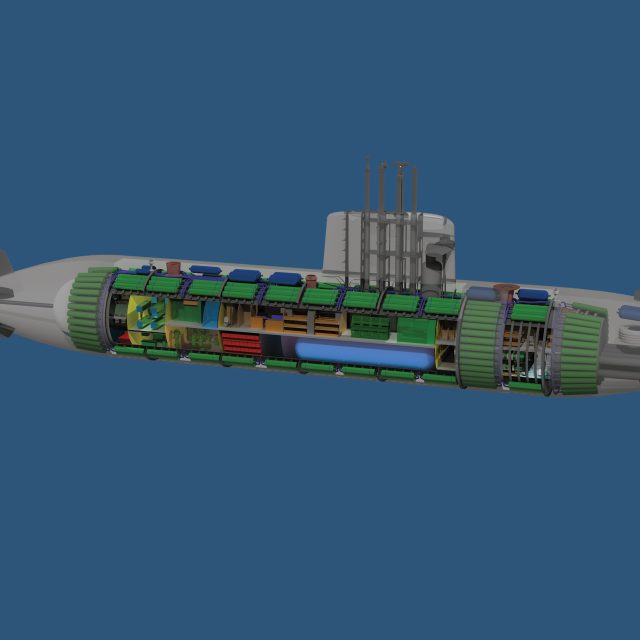
Masterclass Submarine Academy: a deep dive into the complex world of submarines
The Netherlands has a unique marine cluster in which navy, knowledge institutes and companies jointly design and build naval vessels. All the disciplines needed to develop and design a naval vessel are represented within this cluster. The strength of this cooperation has among other things been proven with the submarines of the Walrus Class, which may rightly be called one of the best submarines in the world. Thanks to the combination of operational maritime experience and high-tech marine construction, the Netherlands may enjoy the privilege of acquiring the most modern marine ships at an attractive price. In order to maintain the strong innovative position the Dutch marine cluster enjoys, continuous development of knowledge is being accumulated. For example, Nevesbu introduced its own Masterclass Submarine Design.

With a submarine history dating back to 1935, Nevesbu is the oldest shipbuilding engineering company in the Netherlands. Soon after its establishment, Nevesbu acquired its first export project: the design of the 1000-tonne submarines Sep and Orzel. At that time Nevesbu was still located in The Hague. ORP Orzel and ORP Sep were the beginning of a rich submarine history. Since then, the specialist knowledge acquired by Nevesbu in Dutch and foreign submarine projects has been transferred and renewed through the generations. This combination has resulted in the knowledge institute that Nevesbu is today.
Spying on the Russians at 1.5 metres
One of the submarines Nevesbu has designed is the Dutch Walrus Class, which replaced the Dolphin Class in the 90’s. Did you know that during the Cold War, the Walrus Class submarines were the master spies of the Mediterranean? Operating in shallow water is something that unlike the Walrus Class, few other submarines are capable of doing. The Walrus Class submarines have special ‘stealth technologies’ whereby once submerged are invisible, virtually noiseless and therefore very difficult for ships, aircraft and other submarines to detect. The submarines can therefore stay under water for longer periods while carrying out their duties. For example, a Walrus Class submarine was once able to approach the Russians within 1.5 metres without them detecting its presence. In the book ‘In het diepste geheim’ (In the deepest secret) former crew member Johan Kragten writes: ‘We knew everything about the unknown Russian ships and submarines. I have always had the feeling that the Dutch were way in front of all other marines.’
‘The devil is in the detail’
The special performance of the Walrus Class submarines was made possible by the innovations in the design. Submarines belong to one of the most complex engineering platforms. Wahyu Schiks, Team Leader Naval Engineering at Nevesbu explains why: ‘Designing submarines is not something you can learn at university like designing surface vessels. This experience really needs to be gained in practice. Submarines are deployed for various important missions. The demands made on the design are often contradictory and need to be brought back into balance, we call this designing the requirements. Limiting noise and vibration, for example, requires extra space and energy. These are two things that are always critical in a submarine. We often say ‘the devil is in the detail’. The overview and insight needed to see the connection between the different requirements and to assess the impact of design choices on subsections is one of the focuses of the Master Class Submarine Design. At the Master Class Submarine Design we dive deep into the complexities of submarine design which allows us to map everything involved. To critically evaluate the requirements and to make an efficient and sound design, an engineer must consider factors beyond their own discipline. You must have insight into all relevant disciplines and understand how your own design work can affect the work of other disciplines and vice versa. Despite the complexity you can work more efficiently and quicker to get a balanced design by referring to the dialog in these instances.’
Would you like to know more about Nevesbu's Masterclass Submarine Design? Albert will be pleased to tell you more.
